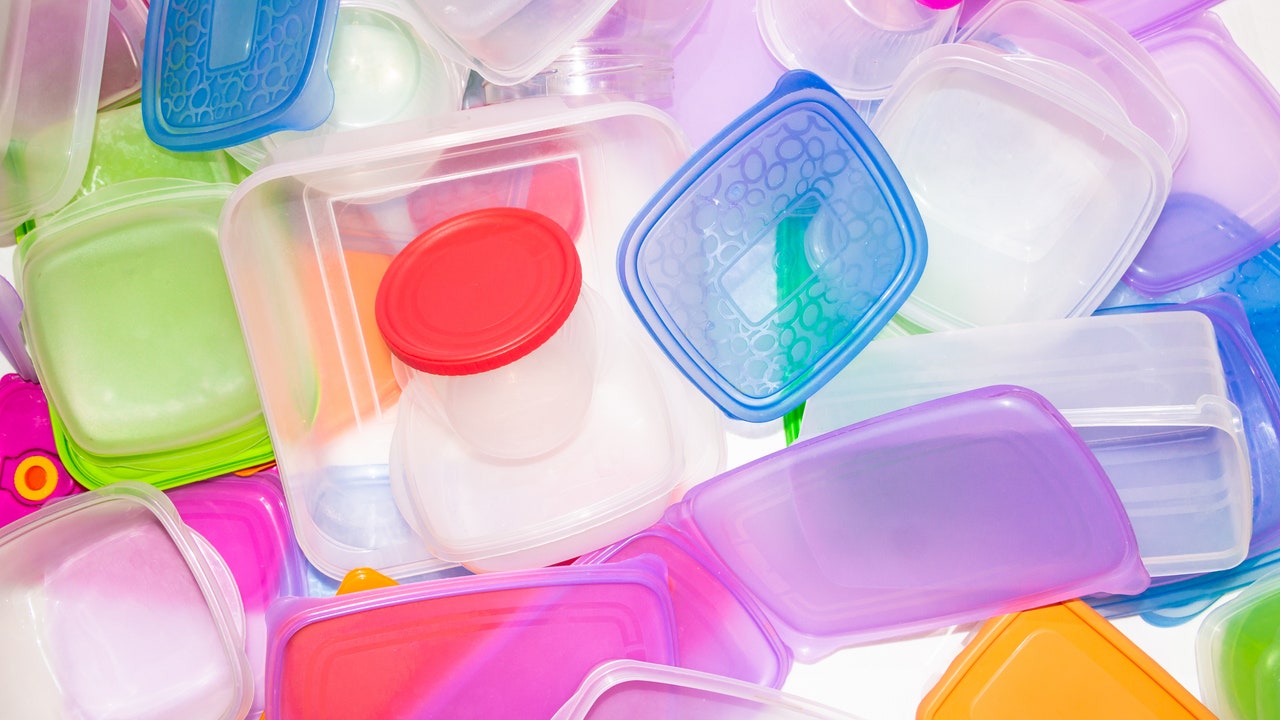- cross-posted to:
- science@lemmy.world
- cross-posted to:
- science@lemmy.world
That eliminates most of the frozen meals section. Before the jump in with “then don’t buy those”, you’re not wrong. It’s easy to point out the many things in society we shouldn’t be doing, but not quite as easy to step back from them all.
Sadly true. I’ve been known to warm those meals up just enough to transfer them to a plate or bowl, and then finish their heating. It doesn’t undo the plastic contact that happened when the food was prepared and packaged, nor does it help the with plastic waste problem, but it’s better than nothing. Meanwhile, I look for frozens that come in paper fiber trays instead of plastic.
When I find a packaged food that I like enough to buy again, I’ll sometimes email the company to let them know I would buy more if they replaced their packaging with something less toxic. My voice alone won’t make much difference, but if they hear it from multiple customers, perhaps they’ll put it on their roadmap. (This seems like a marketing opportunity, especially now that microplastics and other forever chemicals are getting attention in the news.)
Also, there’s always the option of cooking/buying a big batch of food and freezing it in single-serving glass/stainless containers. No plastic at all this way, and the food is often better. :)
Where I live sous vide are pretty common in the readymade dinner section - wonder if they’re better for you than microwaving and if we should maybe be doing that instead
Good article.
“Though various plastics are marked as microwave-safe—and plenty of plastic lobbyists have defended them as perfectly safe—the term is somewhat misleading. It’s simply referring to plastic types that won’t crack or melt when heated, not their chemical makeup.”
Whelp, I may be screwed. Don’t have the money to replace everything
Do you ever buy things that come in glass jars, like pasta sauce or jam?
Do you have a thrift shop nearby?
I go through the stuff very slowly, so it will still take a long time to build up what I need
Slow and steady wins the race. :)
Then don’t - get a small glass/Pyrex casserole dish with a glass lid and decant your leftovers into that every time you go to heat something up. I think IKEA sell some nice sized ones.
If you don’t drop it they last for decades and that’s what I’ve been doing. I do not reccomend looking for vintage stuff though - the reason why they stopped using the original original glass formula is because it chips easily and yeah, something that gets used on a very regular basis with its lid constantly going on and off is going to start chipping something awful over time
Are there glass lids that can be used to cover food so it doesn’t scatter when it explodes? We already don’t use plastic/tupperware in the microwave but don’t have a lid if we need to cover it.
Damp paper towel.
Why damp?
It makes it much easier for it to stay in place. Mainly from the spinning, but if your food explodes a damp towel stays put way easier than a dry one.
This is a good question, already covered in the other comments.
I will add here that exploding food has been much less common since I figured out how to choose a reduced power level on my microwave. (But I still cover the food anyway.)
I’ve always just used a bigger plate/bowl to cover things. They’re much easier to clean than any plastic lid.
Pyrex/borosilicate dishes work pretty well here. Both Pyrex and IKEA do little single serving casserole dishes with a lid that work fantastic. Been using them for decades now
Alternatively you could upend a plate on-top of your bowl
In the microwave, I always use the lid of a bigger glass bowl on top of my large, wide, glass, measuring-pitcher. It doesn’t fit perfectly, but I turn the lid upside down so it doesn’t slide when I carry it.
We’re gonna be needing a probiotic that breaks down plastic in the future.
I actually disagree with this cooking MYTH.
But; it depends on the TYPE of plastic. Don’t trust takeaway containers or soft and flexible plastics.
Hard and rigid plastics are in fact SAFE if marked as “Microwave-Safe”; they HAVE TO BE SAFE to have that marking.
DO:
- avoid soft plastics
- avoid takeout containers
- avoid heavily damaged tupperware
- replace old tupperware plastics once in a while; especially if they’re all scratched/dinged up.
As per the article:
"But what if my container is ‘microwave-safe’?
Though various plastics are marked as microwave-safe—and plenty of plastic lobbyists have defended them as perfectly safe—the term is somewhat misleading. It’s simply referring to plastic types that won’t crack or melt when heated, not their chemical makeup. Supposedly microwave-safe products can still contain bisphenols, phthalates, and plenty of other potentially harmful ingredients."
Did you read the article?
Meh. Gonna die anyways. I’m probably 40% plastic by now. Might as well bump it up.
I reckon the hot dogs, pizza and other junk I’m having often are going to kill me faster than plastic is.
“the air we breathe is a poisonous fume”
Pretty much will turn into a cancer monstrosity in about 10 years. I really don’t care. Death is inevitable.
The air we breathe also has microplastics, apparently … https://beehaw.org/post/8279644
After 30 years of putting plastic in the microwave … I think I’m fine, definitely not worrying about my sperm count ;)
Obviously, it’s good they study this, but apparently the microplastic is already in everything and we don’t really know what it’s doing to humans. Good luck, trying to convince the fossil fuel industry to produce less plastic.
I know plastic is scary but guys, you don’t need to replace your entire plastic container selection - you could just, decant your food into a different container before microwaving it? The microwave is what’s doing this, not the fridge.
I’d recommend getting a small borosilicate/Pyrex dish like This. I’ve been using two of them my entire life (did none of you get taught that microwaving plastic with food make it go funny as a kid?) And they last a good while. Provided you don’t drop them. I think IKEA sells them and I’ve seen them around in my local kitchen store in non-pyrex brands. Also they’re oven and dishwasher safe too!
Also I don’t reccomend hunting for vintage Pyrex here - old pyrex chips super easily and constant use and slamming the lid on will chip the edges to hell and back. The European formula isn’t actually the same as the old one so it’s fine but unless you like glass chips in your cupboard and super sharp edges, don’t go for it.
The microwave is what’s doing this, not the fridge.
Nobody said the fridge is doing this, but it doesn’t prevent it, either. It happens through contact. The microwave accelerates it.
deleted by creator









